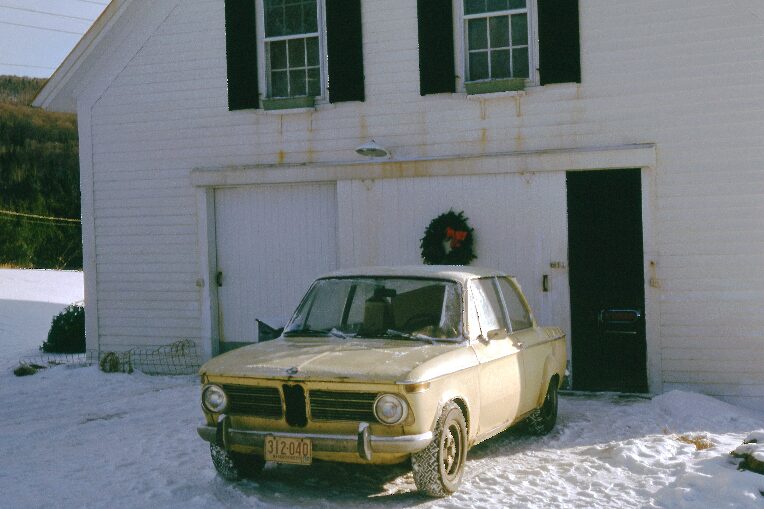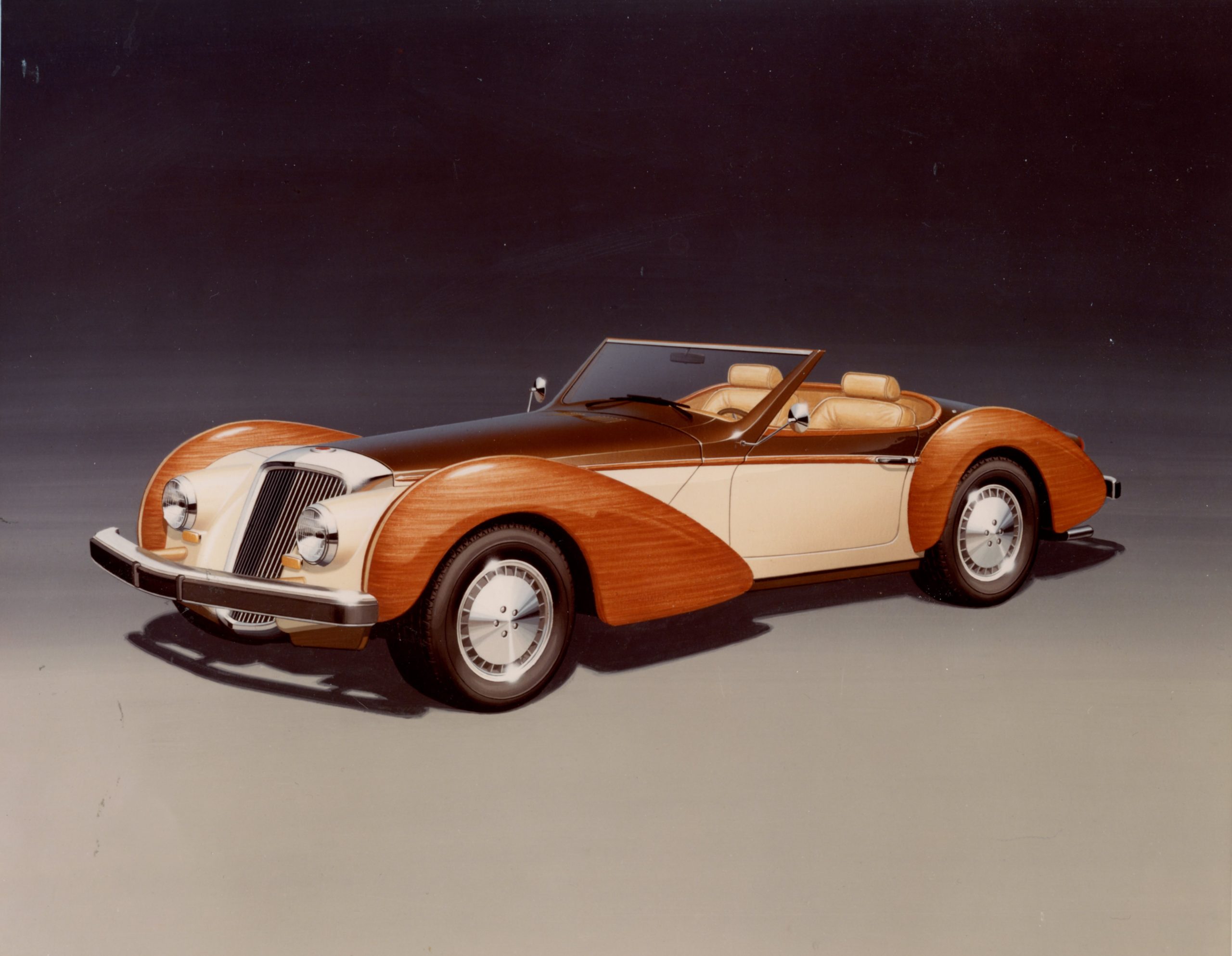Since I started reading sports car magazines in my mid teens I’ve been interested in cars. We lived on the Navy base in Long Beach, CA – where a neighbor had a MG TC, and was kind enough to take me for a ride in it. I liked this enough that – while my first car was a 57 Chevy – when I could make the decision for myself I chose a sports car.
MGA
I bought a red MGA when I flunked out of college for the first time, my reason/excuse was that I needed to be able to get to work. I still remember the leather smell that rose when I unzipped the driver’s side of the tonneau cover. Why doesn’t car leather smell so wonderful today? It doesn’t seem to matter whether the car is old or new, moderate or expensive, the leather smell just isn’t right.
The MGA was well-used, and was one of the early ones. It had a minor oil leak, which I discovered when the oil got too low. The 1500cc MGAs had a three-main-bearing crankshaft – which was more sensitive to low oil levels than the later (1600cc, five-main-bearing) model. So, shortly after I bought it I needed to rebuild the engine. When I was driving home from the shop after buying it back I was pulled over when I went around a corner too fast. (Why else would you drive a sports car?) I told the officer of the situation and he let me go, which was very nice of him – and good for me as I’d spent all my money.
The car also needed a battery. But this wasn’t a problem as I carried jumper cables and parked on a hill whenever I could. I was living with my parents and their house was on a hill. So I started coasting, turned on the ignition, and popped the clutch to start the car. At work, a three-foot roll was enough to start the car – I got very good at doing this, but I still bought a new battery when I was paid.
Early Saturday mornings in good weather I went for a ride. I drove through the country west of McLean, VA – which was all farms then. Like most farming country, the roads meandered around fields – providing great corners. One of these turns also dipped to go over a bridge; on the far side of the bridge the local police were setting up a radar trap – but I was too early for it. They gave me dirty looks as I drove by, but didn’t do anything else. When I left home for my second sophomore year I sold the car.
Porsche Super 90
My uncle Gene, a Naval officer like my father, was fond of Porsches. His first was a 365A, one of the first in the country. When I had the MGA he had a Super 90. (My cousin Steve now owns this car. I haven’t seen it in decades except in pictures, but I see and smell it clearly.) After I took Gene for a ride in my MG and let him drive it, he did the same for me with his Porsche. (Sometimes virtue is rewarded.) First he drove one way down a favorite winding road, then he let me drive back. He sat beside me saying “Faster! Faster!”. A great memory. Gene kept the Super 90 until he bought a 911, when he sold it to Steve.
I doubt that Steve still has it, but Gene had a diatomaceous earth oil filter for years. This was the oil filter used on ships at that time, so he adapted one to use on his car. He told me that he hadn’t changed the oil in thirty thousand miles. (He changed the filter periodically, but not the oil.) This must have been before oil additives became common, as I suspect they would be incompatible (I found no hits on a search for such oil filters). He told me of it when I read his Porche Club of America article on driving across Canada: “We kept the tach at 3 o’clock until we needed gas.”
Sunbeam Alpine
While I was in the Coast Guard my mother bought a light blue Sunbeam Alpine hardtop. She liked it, but I suspect she was planning to give it me when she thought I’d finally grown up. Apparently, she felt this had occurred while I’d been in the Coast Guard, as she gave it to me when I returned to college. It came with a gasoline credit card that my parents paid – it’s hard to imagine a nicer gift.
This is the car in my mind when I think of being at Case. Some of the memories are:
The car was almost low enough to drive under the campus gates. So I would grab the gate through the open window, lift it over the car top and drop it behind. I could do this at 10 mph.
Driving back from southern Ohio in a pouring rainstorm without the top (it was on the lawn in front of the dorm)ll. We discovered that if we stayed over 75 then we stayed dry; only the last couple of miles were wet.
All the parking places were taken, except for one too narrow for us to open the doors. We parked in it, lifted the front of the top, climbed out in our stocking feet, set the top back down, and climbed off the car.
When the original tires wore out I bought radial tires, some of the first to be sold. This gave me a new excuse when an officer thought I was cornering too fast. “They squealed because the pressure is low, not because I was going too fast. I’ll get them pumped up.” It worked for me.
On a Saturday evening I was the “responsible adult” while my aunt, uncle, and their friends were out of town. My friend took their friends’ daughter for a ride in my car. He squealed the tires around a corner and an officer turned on his siren. My friend outran them and hid for a while. Then he drove back to me – passing by the police station. Six police cars stopped on my uncle’s street with their lights flashing. My friend was taken to jail. The dean of students, who lived on the same street, said he would deal with it next week – leaving my friend in jail for the rest of the weekend. This was the only time my uncle got mad at me, but the dean of students defended me – but it wasn’t deserved.
Saab Dealership
When I needed repairs for the Sunbeam Alpine I took it to a repair shop owned by the local Saab dealer; it didn’t say that on its sign – or I might not have gone there – but I learned it after I’d been going there for a while. Frequently, when I didn’t have something that needed to be done, I’d go there and hang out – chatting with the manager and mechanics, handing them tools, and doing whatever I could to help. In return, they taught me about cars and mechanics.
They repaired a lot of Jaguars because one of the mechanics, a Jamaican, was expert with them. So when the Jaguar dealer couldn’t repair a car, they brought it to him. I learned a lot from him, including many Jamaican swear words.
They had a saying: “Don’t use force, get a bigger hammer.”
One of the mechanics drove a Saab – this was when all Saabs were two-cycle, and you had to have oil in the gas. When an engine began to rattle – because it didn’t have oil in the gas – and was under warranty, the dealer would put it in the back room and install a new engine. The mechanic carried one of the rattling engines in the trunk, and had another installed. Every month or so he’d be an hour or two late getting to work or home. The engine would have seized, so he would swap engines at the side of the road. The engine was light enough, and came equipped with a handle on the top, to make this possible.
The guy that owned the dealership raced a Corvette. One day he hit a deer at 120 mph during a race. He said that he survived because he was driving a fiberglass car – it crushed and the deer went under, instead of being picked up and hitting him in the face as the car had no windshield.
One day Saab sent around a prototype Saab Sonnet, a sports car they were thinking of building. I drove it and loved it; it had an 850cc two-cycle engine – it was very light and very fast. But when they produced it for sale they used a four-cycle engine, heavier and lower-powered – so I never bought one. When I graduated, I bought a BMW 2002 (see post).
Since…
All of my cars since have been sedans. While some had good performance and/or personalities, they just didn’t have the attraction that sports cars have for me. But modern sports cars are so fast – and I’m getting older – that I really couldn’t do justice to one. The only one I’ve driven that I’d really like is the Mazda Miata. But when Paula and I met, she was driving a sports car and I was driving a sedan – and it has remained that way. But I’ll tell you about driving a Miata…
Because a friend told me when to send my name in we were invited to a Mazda Track Day. There, on an old airport, we could drive all of their cars on the track. I liked all of them, but the only one I had an emotional response to was the Miata. Paula was riding with me, the track was tight – all turns. On the first turn I put the tail out and held it there. One of the Mazda employee’s head clicked around so he could watch me. For the next turn I flipped the tail out the other way and again held it – and he looked elsewhere; I considered that a compliment. While that’s the only modern car I know of where you can do such things at low speed, I can’t think of a better way to be pulled over than to be seen doing it on the road. But it’s a nice memory.
July 27, 2020




